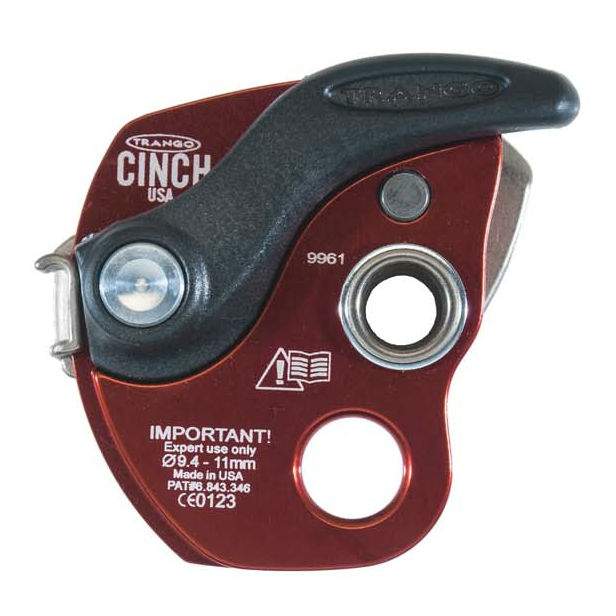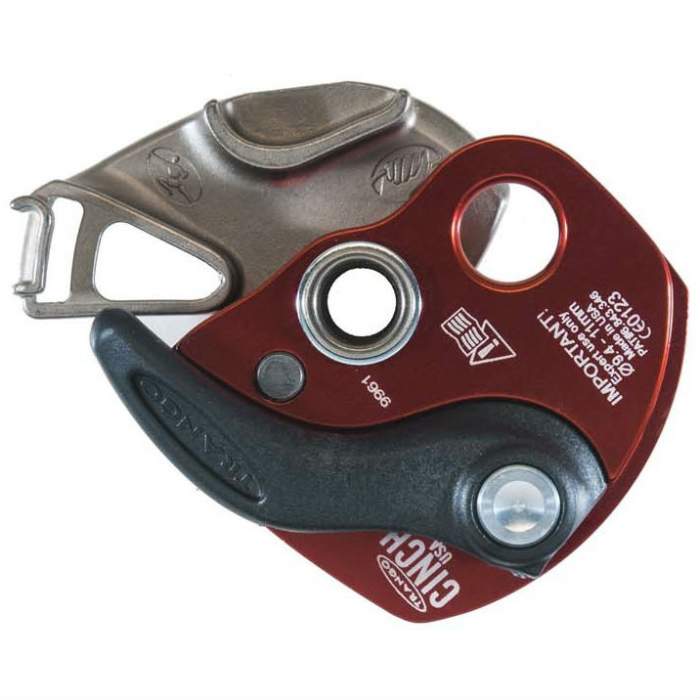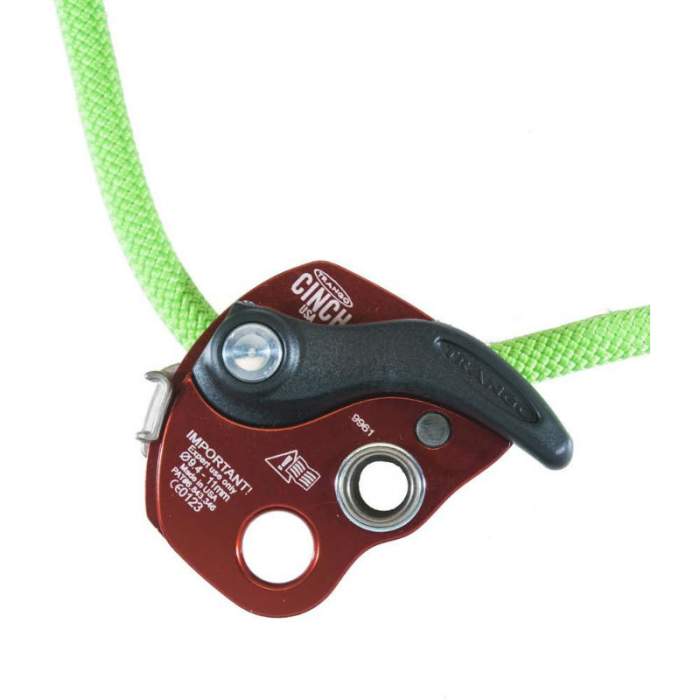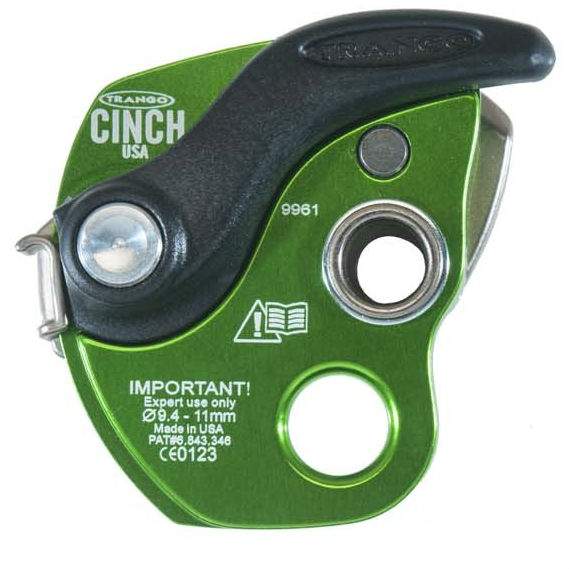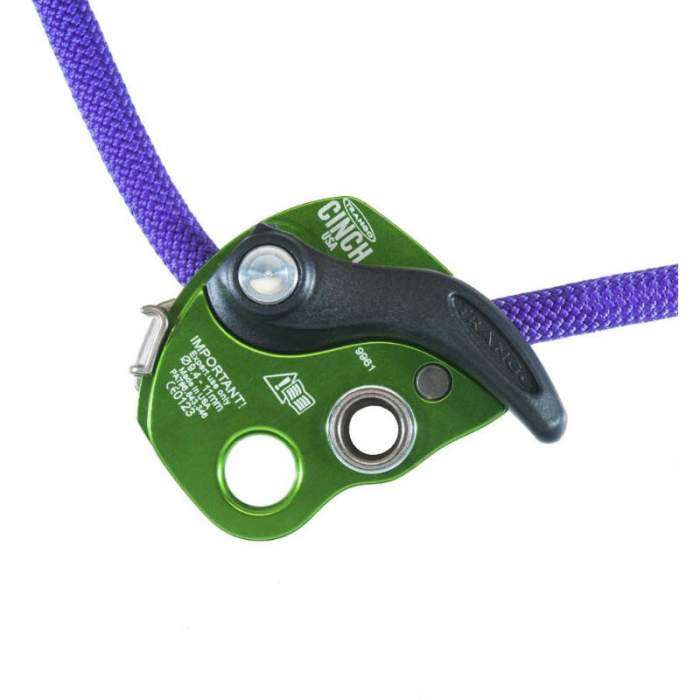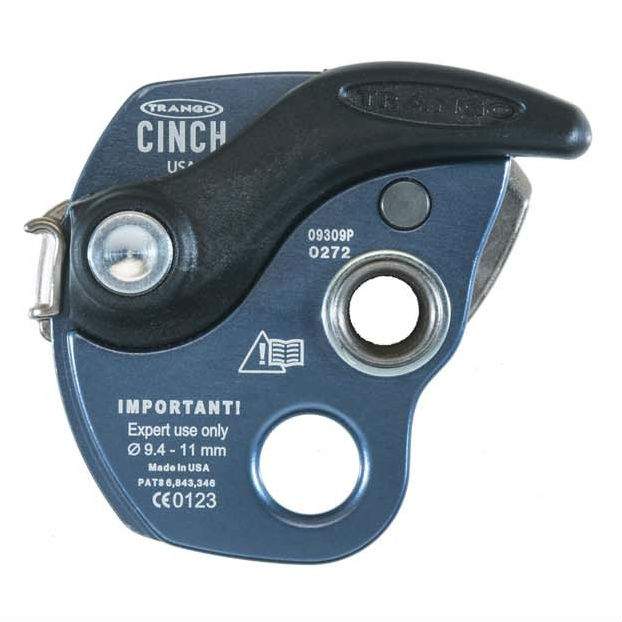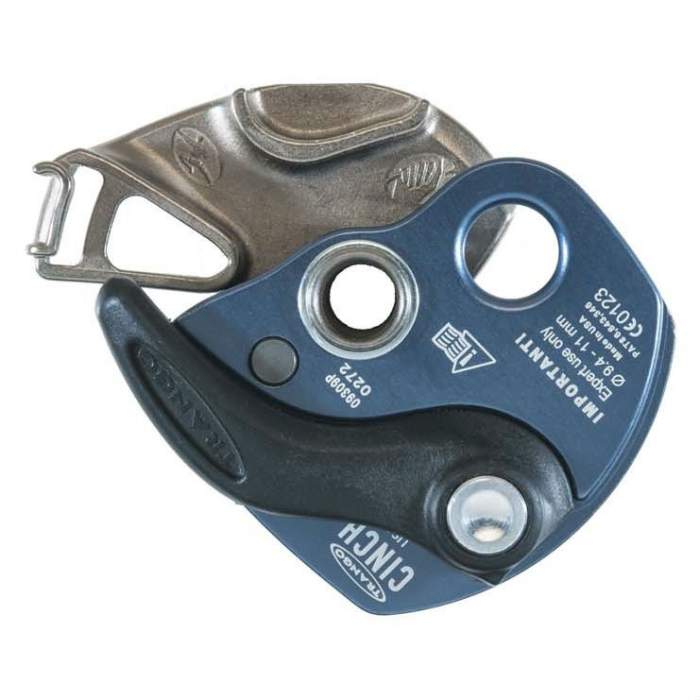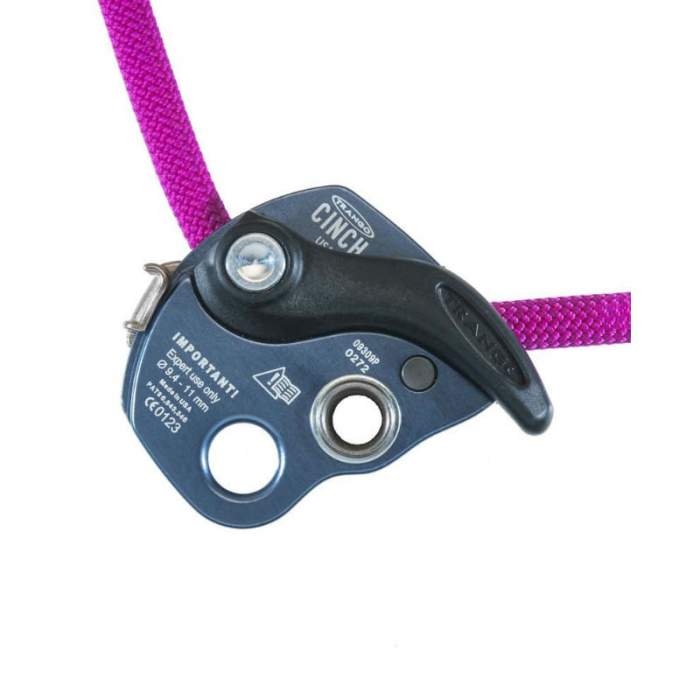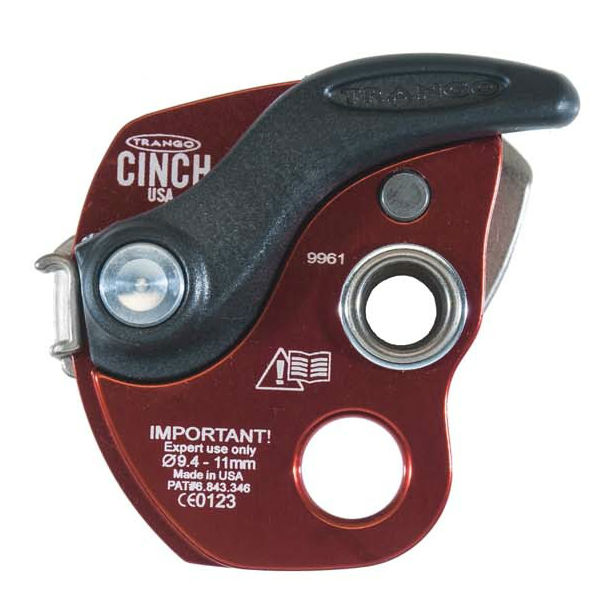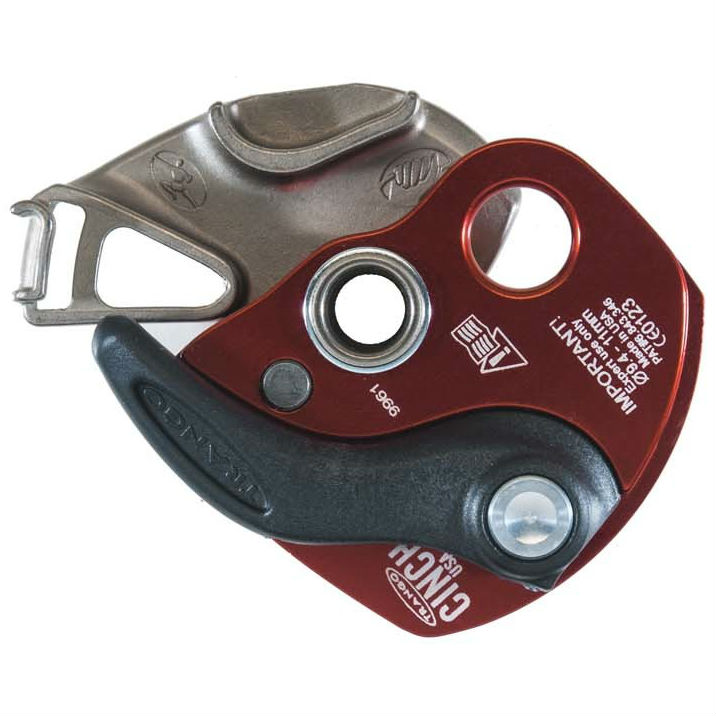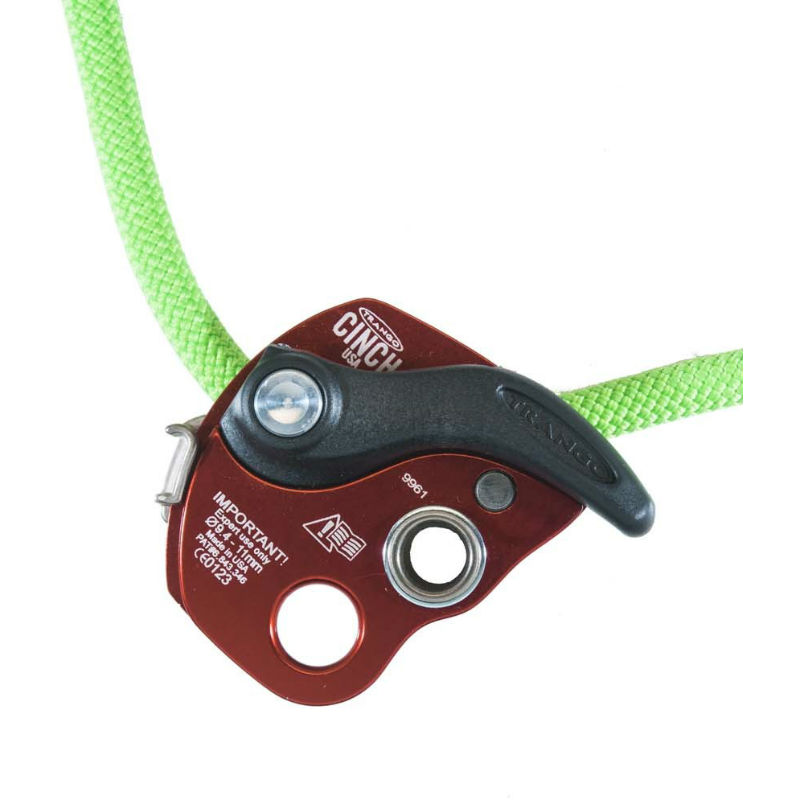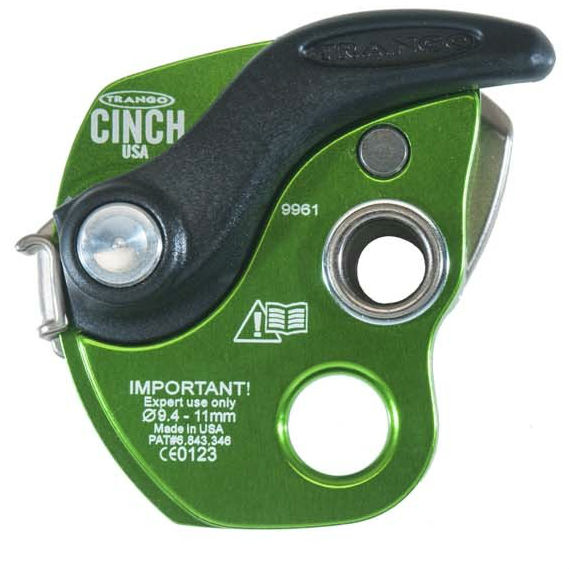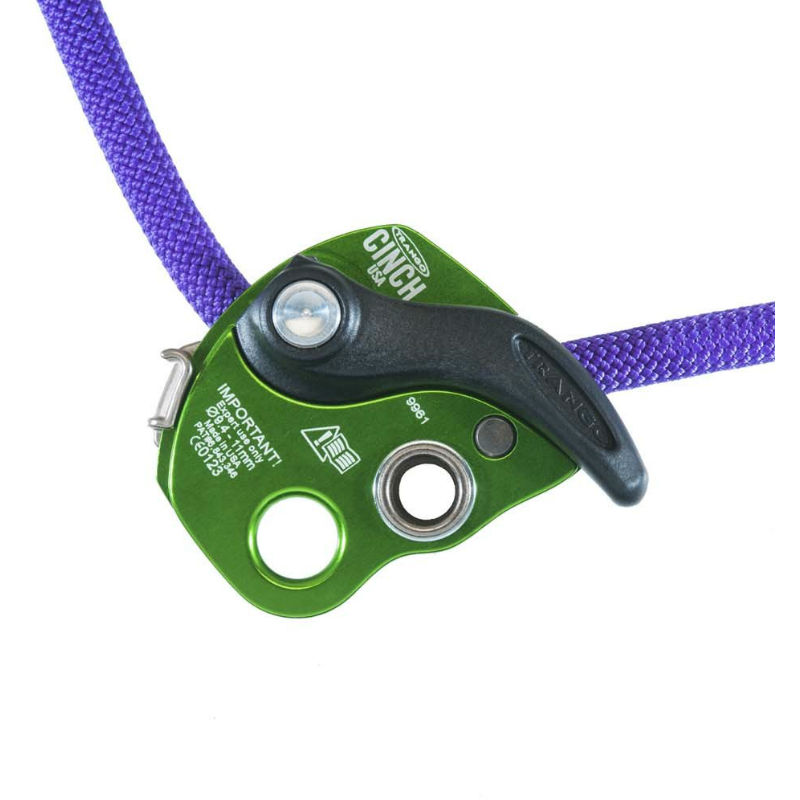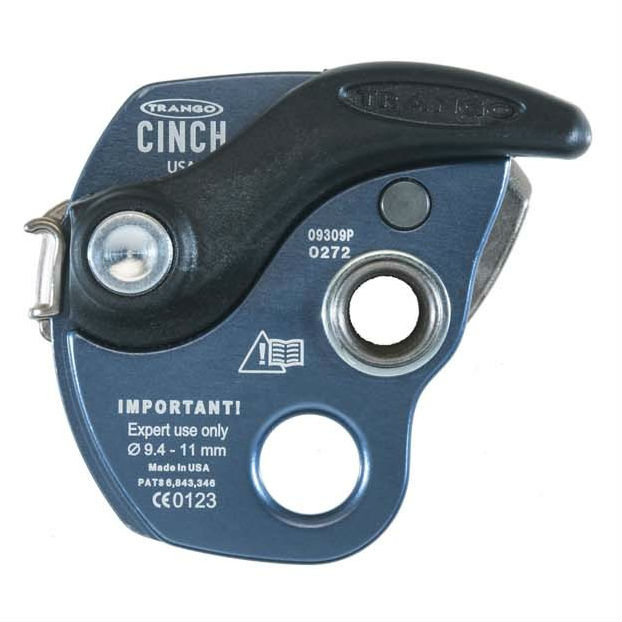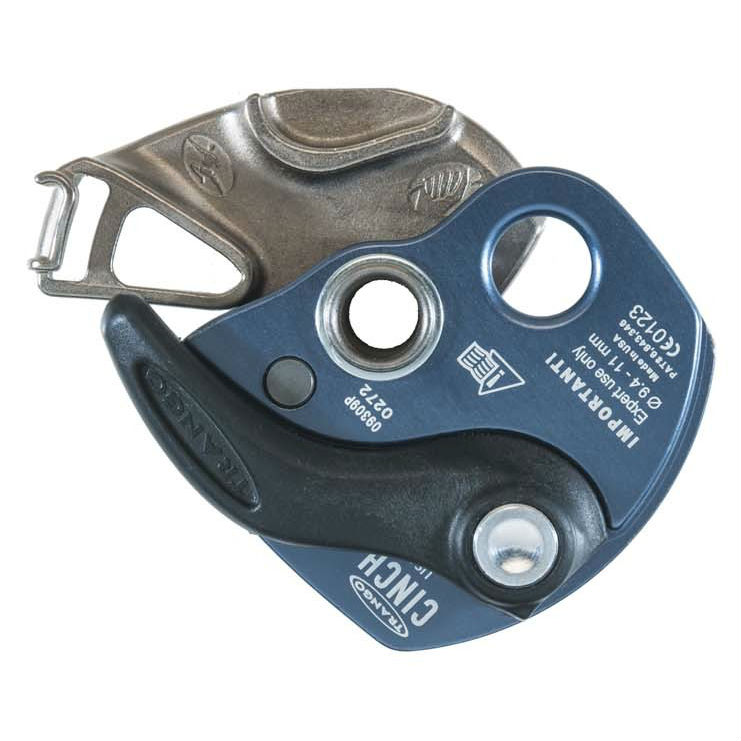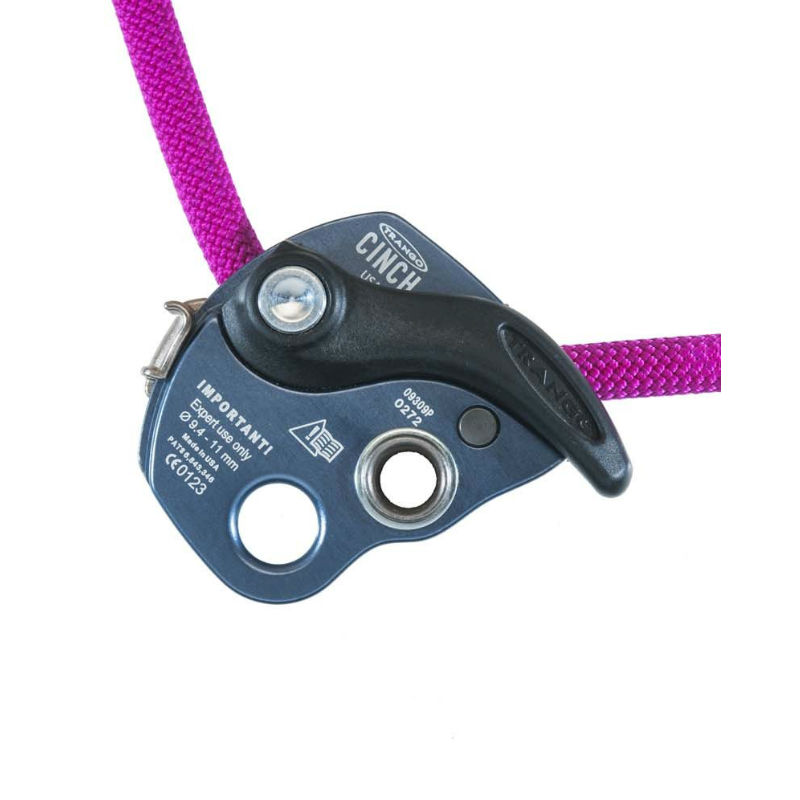Cinch
Description
The Cinch™ is the latest in a long line of innovative belay devices introduced by Trango. We designed it with an eye for function, aesthetics, and simplicity (it’s about as complicated as a door hinge) so it offers up a secure belay and lower on a wide range of single ropes.
On smaller diameter ropes, or when holding falls that generate extremely high loads (in excess of factor 1) the Cinch acts dynamically, reducing shock loads to the belay system. In addition, it will release easily and modulate fluidly while you’re rappelling or lowering off. The Cinch feeds rope easier than any other device, fits nicely in your hand, and weighs 182gm. For use on CE/UIAA dynamic climbing ropes only.
Retail price
This Product is Hard to Find.
We don’t know where you can buy this item online in the US. We’ll continue to check all the major retailers and will update this page as soon as we find one.
If you know where to find this online in the US, let us know, and we’ll add the link.

Device Type  Device TypeTubeThe most commonly used belay type also called an “ATC” or “tuber.” Other than a distinction between other belay device types, “Tube” is a rarely used term, most climbers just assume you're talking about this style when they refer to your "belay device." 
Figure 8Mostly used in rescue, canyoneering, tactical, work safety, or by old school climbers and rappellers. One reason they went out of popularity with recreational climbers is because they tend to create twists in the rope. 
Brake AssistThese devices assist in stopping the rope when a climber falls or hangs on the rope. 
Often referred to as “auto-blocking” but that’s not the official terminology because no belay device should be assumed to work automatically by itself, even if it feels like it does (or does most the time). PlateWhen simplicity is a must, or you started climbing before Tubers were the norm. Bonus: They tend to be very light weight. 
DescenderFor rappelling, not for belaying a lead climber or top-roping. 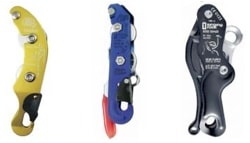 |
Brake Assist - Mechanical |
Weight (g)  Weight (g)In grams, the weight, as stated by the manufacturer/brand. |
182 g |
Belay Brake Assist  Belay Brake AssistThis is when the belay device significantly reduces the amount of holding power the belayer must exert to stop a fall and hold a climber. This is also called "assisted-braking" as the device must hold a significant amount of the climber’s weight; this term does not include friction-adding "teeth" found on some tube style belay devices. Confusingly referred to as “auto-blocking” or “auto-locking” these terms wrongly imply the device will always, automatically, stop a fall or hold a climber even if the belayer/rappeller is hands-free. These devices are not meant to be used without a hand on the braking side of the rope; the belayers/rapppeller brake hand should always be on the brake rope. Worth ConsideringMost of the mechanical brake assist devices only hold a single strand of rope and are not capable of double-strand rappelling (the most common method of rappel). |
Yes |
| Rope Options | 1 rope only |
Guide Mode  Guide ModeThis is when you belay directly off the anchor instead of your harness. Guide mode is helpful if you climb outdoors a lot because it reduces the holding power required from the belayer. When your partner falls or rests, the weight of the climber is held mostly by the anchor and the belay device. Tubers and PlatesWhen belaying in "guide mode," the tubers and plates turn auto-blocking. During a fall, the climbing rope pinches the slack rope, completely stopping the movement of either rope. A common guide mode setup shown below. 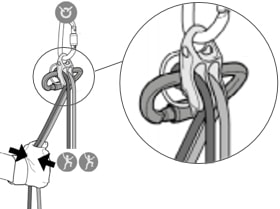
Mechanical Brake Assist DevicesThere is no difference in the functionality of the device. A brake-hand should always be on the rope to ensure the climber is caught in the case of a fall. A common guide mode setup shown below. 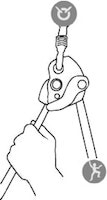
Where guide mode is used
Learn Morehttp://www.climbing.com/skill/essential-skills-auto-blocking-belay-devices/ |
1 follower only |
Teeth  TeethTeeth are only seen on tube devices. They add friction that helps grip the rope for more belaying control. This is helpful for belaying heavier climbers. Teeth are becoming standard on new tube devices. 
Worth ConsideringTeeth do wear out. You can limit wear by rappelling on the side without teeth (if you don’t need the extra friction). Once they’re worn, you’ll still have a usable belay device, just less friction. |
No |
Rope Range (mm)  Rope Range (mm)The range of rope diameters, in millimeters, that the manufacturer/brand specifies can safely be used. This is the best case scenario and does not necessarily take into consideration that certified ropes have a tolerance of +/- .3 mm. Recently, manufacturers have started to add an "optimized" rope range -- this is the range that will result in the nicest handling of the belay device. | 9.4 mm - 11.0 mm |
Certification  CertificationsThe main climbing gear certifications are CE and UIAA--and normally the UIAA creates the rules that the CE body also supports. When possible, we try to list all the certifications the product carries. To sell a climbing product in Europe, the device must be CE certified. There are no official requirements to sell climbing gear in the US. The UIAA certification is a voluntary process. Learn MoreRock and Ice Certifications Guide |
|
In our previous look at belay devices, the Cinch had enough advantages over the original GriGri in size, weight, and price to earn it a Top Pick award. Today, the GriGri 2 has taken the lead in weight and narrowed the price difference while also proving to be every bit as reliable as it's predecessor. In addition, other viable options, like the Edelrid Mega Jul, have entered the market to compete as affordable passive assisted braking options. For these reasons the Cinch no longer receives a Top Pick award, but any shopper searching for the smallest and cheapest active assisted locking device should still consider it.
I remember the first time someone suggested I try sushi. Saying that I was reluctant would be an understatement. Now, having tried sushi, I have made it a staple in my diet. I felt the same resistance I had for sushi when first trying the new and improved Trango Cinch ($69.95 retail). However, after playing with the Cinch at the offices of Dead Point and in the field, I concluded that this is the most underrated belay device on the market. The Trango Cinch is simple, intuitive, light, and locks down skinny ropes like a fugitive in Guantanamo post 9-11.
The Cinch (trango.com) has been available for years and has scads of loyal fans, who see it as a cheaper, lighter, and more compact tool than the Grigri. Though the Grigri 2 has stolen some of that luster by getting smaller and lighter, the Cinch is still a solid performer, and it handles really well—once you get the knack of it. One of the tricks to the Cinch is the non-intuitive lowering technique that Trango recommends, but once this is figured out and mastered, it is smooth sailing. For belaying, you essentially hold the device open so it feeds easily. It then locks up under load almost instantly—it scored 9.8 out of 10 among our testers for “automatic” braking. Since the right techniques are essential, we highly recommend watching Trango’s how-to videos. One tester called the device “smoother than the Grigri—smoother than an ATC! But you have to do
it just right.”
While certainly not a do-it-all belay device, the Cinch is remarkably adept at doing what it does extremely well. If you are in the market for an auto locking belay device that fits on a wide variety of rope sizes and is as smooth an operator as the stud that Sade sang about, be sure and give the Cinch a spin.
Pros: Small and light weight; accommodates a wide variety of ropes; incredibly smooth rope feeding; simple to use*
Cons:* Simpler to use after watching video; small carabiner hole
This video shows all the instruction needed to use Cinch Belay Device correctly, a perfect instructional video.

